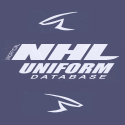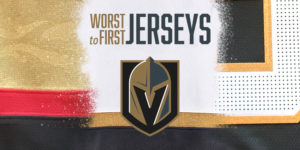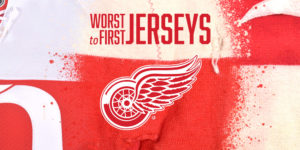BTLOly #8–#1
 Okay, so we were a little overly-ambitious here at Hockey By Design, thinking that we could cover 14 posts in 17 days during the Olympics. But in these Olympics, there was only one post that really mattered. Sorry, too soon? Okay, how about this other post?
Okay, so we were a little overly-ambitious here at Hockey By Design, thinking that we could cover 14 posts in 17 days during the Olympics. But in these Olympics, there was only one post that really mattered. Sorry, too soon? Okay, how about this other post?
Now that half the readership has been alienated, let’s admit defeat and recognize that, now the Olympics are officially over (although the ParaOlympics are just beginning), does anyone really care who comes first in the BTLOly Countdown? Too bad. Gotta finish what was started.
As a reminder, for BTLOly (Best Team Logos in the Olympics) the “logos” are not the official logos for any of the hockey federations of the countries and have been designed specifically for this short 2-week long tournament. They’re meant to be temporary logos to symbolize a country, but the logos are still symbolizing a country, so a certain amount of thought has to be put into their design.
Enough with the disclaimer, let’s keep going with, well, the rest of them…
For the Czech Republic, Nike chose to use their national coat of arms as their main logo. It’s never a bad choice to go with as they’re often unique, interesting to look at and have classically awesome designs. And this one is right up there with the best of them. But, used as a hockey jersey logo, it’s just too complex to be used effectively.
At smaller sizes, as it is on the jersey, it’s a bit of a jumbled mess. While the red-and-white checkered eagle is the best and most unique part of the crest, it’s the hardest thing to make out on the jersey.
Another thing that hurts this crest is that the shape of the actual logo itself (essentially a tall rectangle with a tiny teat at the bottom) is very uninteresting. The complexity of the design inside the shape creates a visual mess that forces the shape to become the main visual component, and it’s boring. It’s hard to use the word ‘teat’ and not make a joke, but we just couldn’t milk anything out of it.
Again, this critique is for using this specific crest as a hockey logo. It just doesn’t work. But, as a country’s coat-of-arms and being representative of the country itself, it’s a great design. But dammit, this isn’t Country Coat-Of-Arms By Design, it’s Hockey By Design. Maybe taking one of the elements on it’s own (like the checkered eagle, for example) would have been interesting and worked better.
The US departed from their usual collegiate letter that they used in the 2010 Olympics, as well as many times in their history of international competition to dig even deeper into their history of international competition to use this crest that makes for a somewhat odd choice. Is it a logo, or route directions? The men’s team probably could have used some direction in their last two games, amirite? Anyone? Bueller? Sorry, I’ll stop.
While the Czech Republic’s crest was too complex, the US has the opposite problem of the crest being too simplistic, or at least being surprisingly overly refined and minimal. I like the historical connection, but it just doesn’t feel American, does it? It’s got the stripes but missing the stars (painfully added as glossy elements on the shoulder yokes). It says ‘USA’ but it’s missing its familiar collegiate aesthetics. It’s American enough, but not American enough. Does that even make sense? Sometimes it comes down to just plain old feelings. Design isn’t always a precisely exact science.
The logo has the proper elements to be American, but it breaks strongly away from the American aesthetics of the more recent past, to create something that’s new, but old at the same time. While that can sometimes be a compliment (see: the Wild’s new road jerseys), it isn’t in this case. The element comes together nicely, but not in any exciting or unique way.
Also, they decided to outline it in bronze, which is a strange move to make, especially considering they outlined Canada’s maple leaf in gold. Given the significance of the tournament and the expectations of everyone playing and watching the American team, it was in all honesty and pretty stupid decision. And overly optimistic as it turned out.
But also, another teat!
Latvia almost has a slightly more refined version of the Czech Republic’s logo: the national coat of arms, but with fewer details to make out and a simpler colour scheme: burgundy and grey, which look great together to be honest, and works really well on a hockey jersey. They altered the actual Latvian coat of arms to minimize the colour scheme which took a bit of thought and served the design of the logo – and the jersey – really well.
The prerequisite standing lion is there (is there a European country that doesn’t have one?) as well as a griffin, which is also a lion but with eagle wings, head and talons. So, it’s a lion that can fly, which is terrifying. Imagine if the griffin was using performance-enhancing drugs too? Truly frightening!
The sun and stars are nice simple additions that de-complicate the design, making it more suited for use as a hockey logo. But it suffers in the same way the Czech Republic’s logo suffers: because of it’s still relatively complicated design, the outer shape is what’s really looked at, and it’s the same square rounded at the bottom (going teat-less though). The stars at the top, though, are a nice simple addition to make it stand out a bit more.
But it’s still got great details and the more simplistic approach compared to some of the other coat of arms gives Latvia a pretty good rating.
Now we’re getting into the pretty bad-ass country logos. This two-headed eagle is the national coat of arms for Russia, and it’s got a great shape to it, with lots of movement and dynamism in it. Remember when, in the BTLNHL Countdown, 3 of the top 4 teams (Red Wings, Flyers, Blues) all had stylized wings in their logo? It’s a symbol of strength, movement, grace and boldness, everything a hockey logo should be.
The one thing that hurts this Russian coat of arms as a hockey logo is that it’s just too complex, especially with the added crest in the middle with the horse and rider. Just too much going on for such small usage like on a hockey jersey. It would look great if the jersey was framed and up on the wall, with ample time to look at it and really enjoy the details (is there a teat in there somewhere?), but in a game, the middle crest is a splotchy white/red mess.
That could be a reason why Nike decided to make the white jerseys have a white silhouette of the top of the crest as the main feature on the jersey, and it works really well. It really was one of the best jerseys in the whole tournament. It’s one of the few smart moves that Nike did with the Olympic jersey design.
The gold colour really works for the logo too: regal, elegant and brazen, matching the design of the eagle. Too bad the actual team wasn’t as golden, amirite?
It’s good that Germany is next, as it gives a very clear example of what a minimized eagle design might look like. It actually went a little bit too far the other way, being too minimalist and almost child-like with talons that look like barbed pinwheels. The hard angles and lack of almost any curves except in the tail and wings makes it super-aggressive as a logo. Also, black. A black eagle. That’s some scary shit right there.
But the relative over-simplicity is not enough to keep it out of the top four. And it actually works better as a German hockey logo than it’s main purpose, which is the German national coat-of-arms. It uses the colours of the German flag, is graphically strong and simple, it’s aggressive but because of the wings, still has some movement and flow to it. The black eagle is also a long-time symbol of Germany (for better or much, much worse) so it’s immediately recognizable (at least to Europeans I’d guess anyway) as a German symbol. The simplicity of it compared to the other coat-of-arm logos makes it unique and iconic within this recent Olympic tournament.
Does the eagle looks a little like an overhead shot of it being just run over by a truck? Yeah, a little bit, but again, that’s the over-simplification of the eagle. A little more added to it might have made it truly great.
And there’s another teat! Is that a bad thing? Not really sure, but at least it has a sense of purpose – to mimic the point of the tail.
It’s hard to not rank the Tre Kronor anywhere but high on international hockey lists. Like the ‘Original Six’ team logos in the NHL, they’ve been used for so long that they’re become iconic and immediately recognizable. And the design is so simple, strong and unique. The design itself is drawn from the Swedish coat-of-arms, which prominently features the three crowns as well as whole slew of other things. Similarly to what was said earlier about the Czech logo, using one of the elements from the coat-of-arms would make for a better hockey logo. Sweden figured that out years ago.
What’s interesting is that the actual shape of the crowns change slightly over the years. This version is the same as 2010, but the version used from 1992–2006 is different, slightly less detailed. Before that, there was another more rounded off version (this photo is from the 1988 Olympics). These latest version are a great blending of those two previous versions: it’s more true to the crowns on the coat-of-arms than the 1992–2006 version, but is a little more aggressive and refined than the pre-1992 version, which is better for a hockey logo. The shape is simple, recognizable and has strength and movement to it. Having three crowns in a triangular shape only adds to the strength and movement.
As for the colours, blue and yellow are uniquely Swedish, used on their flag and not many other countries use solely that combination of colours. No coincidence that’s also Ikea’s colours. Now if they could just dye their meatballs that colour, then you’ve a full-fledge brand going…
Another national coat-of-arms, but one that has strong design roots in the contemporary era, without dancing lions and griffins and bears and crowns and eagles that exemplify traditional European coat-of-arms. This one, adopted in 1993 after the breaking of Czechoslovakia into the Czech Republic and – you guess it – Slovakia, is obviously a different approach than most countries, and it works well as both a national symbol and a hockey logo. Simplistic, but with unique and distinguishing features.
The shape itself is nothing new: a shield resembling many of the other coat-of-arms’ shapes (and relatively teat-less, instead just coming to a point). The three humps represent the three main mountain ranges in Slovakia and the cross icon represents, not surprisingly, Christianity. Whether a believer or not, it’s a more unique cross (with two cross-strokes instead of one – a more eastern European, and historically a Byzantinian, take on it) and looks quite strong. The flares at the ends gives it a little more movement too. It’s a nice combo. Say whatever you want about Christianity, but there’s no question that it’s well-branded.
The mountain humps are a little odd, being as rounded as they are, but again, it’s the uniqueness of them that makes them interesting, also doubling as being interpreted as clouds perhaps? Or maybe a head of cauliflower? Do Slovakians really like cauliflower maybe? Regardless, this is a good example of the strength that’s possible in simplicity in design, and it’s a design that has enough simplicity that it works as a hockey logo, with elements of strength, movement and dynamism.
The colours – red, white and blue – are the only really boring part of the logo, using colours that pretty much 50% of the countries in the world use (as well as over 50% of the teams in the NHL), but hey, I guess it’s their country’s colours, so what are you going to do?
But that’s pretty small potatoes. Or, maybe small cauliflowers?
Yeah, it’s a little weird-looking, a little dishevelled, but this black eagle is bad-ass. It’s the perfect marriage between the over-simplicity of the German eagle and the over-complicated Russian eagle. It has enough detail to be visually interesting, but doesn’t get overly complex. And it’s just mean-looking. Not an eagle you’d want to mess with.
As regular (or historic) readers of the blog will know, we have a soft spot for quirky animal caricatures that are unique and visually interesting. This definitely falls into that category. And, as should be included in any great hockey logo, it has inherit strength, gracefulness, intensity and movement. Again, having wings helps with a lot of that, but the actual design of the wings – a little ragged, but with a pattern of different widths of feathers – actually adds to the strength and movement within it. The curls coming from the eagle’s head and tail accentuate this too. It’s one intense and aggressive bird.
The shield in the middle, unlike to overly-detailed Russian horse and ride, is a simple shield with the Austrian flag on it. Simple, iconic and an immediate visual connection with the country being represented. Some of the other elements (the hammer, the sickle and the broken chains), while they’re definitely symbolic for the country, aren’t necessary for use as a hockey logo and could be removed.
But otherwise, it’s a great logo that balances between detail and simplicity and, for a coat-of-arms, it’s more unique than the rest of the countries participating in the Olympic tournament.
Agree? Disagree? Make a comment below!
BTLOly #9: Finland
BTLOly #10: Switzerland
BTLOly #11: Slovenia
BTLOly #12: Canada
BTLOly #13: Norway
BTLOly #14: Japan























Great article–really enjoyed it! A couple thoughts:
— Typo in the Sweden part–think you meant to say 1988 Olympics, but you wrote 1998.
— The shield in the middle of the Russian two-headed eagle is a very important element of Russian iconography. It’s St George and the dragon; that emblem is used in various ways all over the country (Moscow’s signage and transit, a very high decoration for service, etc). I actually wonder why Russia didn’t go with an eagle for one jersey and the St George stabbing the dragon on the other….
Typo fixed. And that’s a great idea about the Russian jerseys. Would’ve been cool to see that.